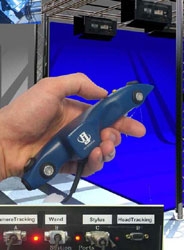 |
Abstract: Perceptual criteria for eliminating reflectors and
occluders from the rendering of environmental sound
William L. Martens and Jens Herder. Perceptual criteria for
eliminating reflectors and occluders from the rendering of
environmental sound, 137th Meeting of the Acoustical Society
of America and the 2nd Convention of the European Acoustics
Association, Berlin, March 1999.
Given limited computational resources available for rendering spatial
sound imagery,
it is important to determine effective means for choosing what
components of the
rendering will provide the most audible differences in the
results. Rather than begin
with an analytic approach that attempts to predict audible differences
on the basis of
objective parameters, subjective tests were executed to determine the
audible
difference made by two types of sound obstruction: reflectors and
occluders.
Single-channel recordings of 90 short speech sounds were made in an
anechoic
chamber in the presence and absence of these two types of
obstructions, and as the
angle of those obstructions varied over a 90-deg range. These
recordings were
reproduced over a single loudspeaker in that anechoic chamber, and
listeners were
asked to rate how confident they were that the recording of each of
these 90 stimuli
included an obstruction. The results revealed the conditions under
which these
obstructions have a significant impact on the perceived spatial
image. These
confidence ratings were incorporated into an evaluation function used
in determining
which reflectors and occluders are most important for rendering.
Keywords:
audio rendering, sound spatialization resource management, level
of detail, occluder, first-order reflection, human perception
Full paper: [Postscript gzip] [Slides] [Video]
|
 |
